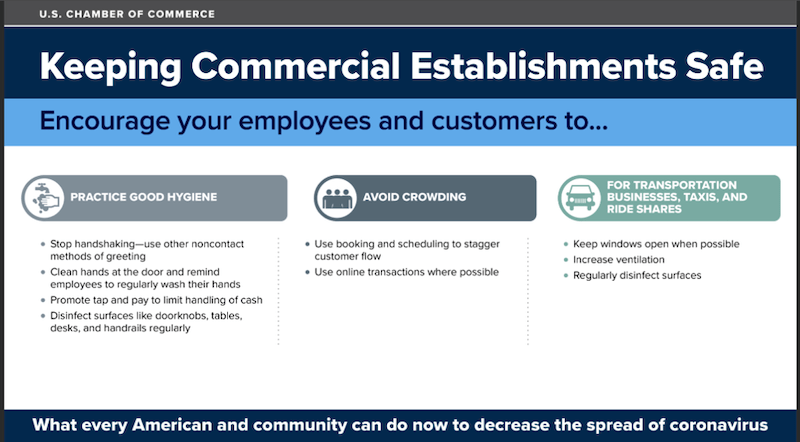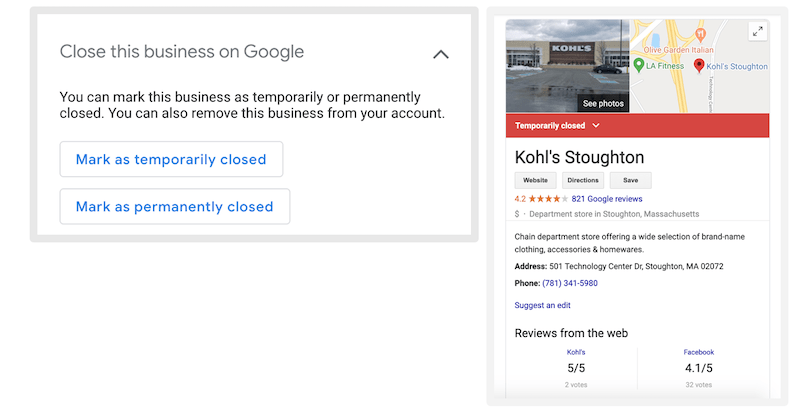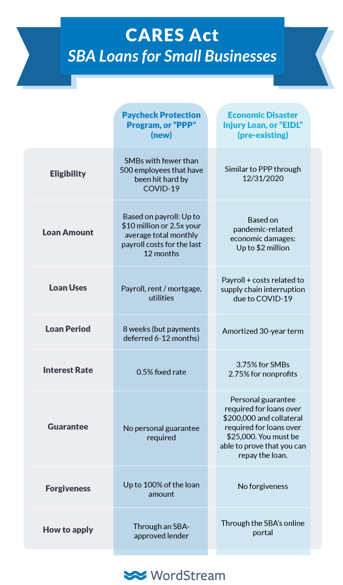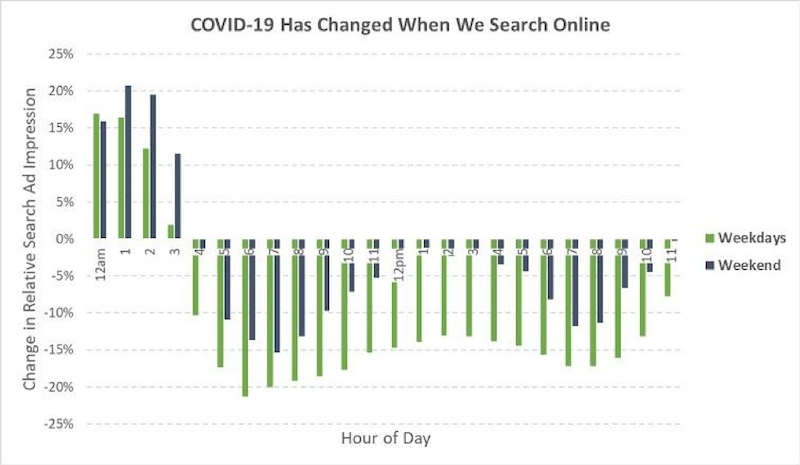While there is a breadth of online resources available to small businesses during the COVID-19 pandemic, it can be hard to sift through everything. We’ve come up with a simple guide, organized by seven common COVID-19 objectives, including:
- Ensuring safety
- Communicating with customers
- Updating your listings
- Adjusting your marketing and ad campaigns
- Managing finances
- Working remotely, and
- Making sense of it all
Every business is different, so this is not a prioritized plan of action or an exhaustive list. Our hope is to give you some solid starting points and sound advice from trusted sources, so you can stay on track with what is important to you.
Post-peak update: You can see data-backed patterns among digital agencies that are surviving and thriving in 2020 to pull any key takeaways that you can apply to your business.
1. Ensuring safety
Though we may be past the preparation stage, ongoing protective measures are important for businesses still operating and for reopening those that are currently closed.
The Chamber of Commerce is one of the reputable resources for ensuring your business is up to COVID-19 safety standards.
2. Communicating with customers
It’s important to communicate to your customers the status of your operations, what safety measures you are taking, the best way to get in touch with you for questions or concerns, and where to find updates. Make sure you’ve covered all of your channels, including:
- Email: Send separate emails to your current customers versus your broader community (newsletter subscribers, for example) so you can proactively address specific concerns.
- Voicemail greeting: Provide the date, essential information, as well as any online channels you are using for updates.
- Social media profiles: Create a pinned post that provides your COVID-19 response or links to it on your website.
- Signage at your location: Make sure to post if you have a brick-and-mortar location.
- Homepage: Make some kind of modification to your homepage to indicate that you’re on top of the situation. Depending on your business, this may mean a simple sticky notification bar, a link to a COVID-19 page, or a full-page rework.
Make some kind of modification to your homepage to ensure customers you’re on top of your COVID-19 response.
For help with what to say, here are some resources:
- Coronavirus Response Toolkit: Free assets from the US Chamber of Commerce.
- COVID-19 Communication Templates: Free templates from AlertMedia.
- There are also a lot of industry-specific templates being shared, so it may be worth a Google search to see if there are any available for yours. For example:
Navigate the changing online advertising landscape with this free small business guide to COVID-19.
3. Updating your Google My Business listing
You don’t need to update all of your online listings, but as consumers rely heavily on Google for real-time information, this is one to prioritize. To make edits to your listing, go to google.com/business and make sure you’re logged in as your business account, not your personal gmail account (which you could be if you’re using a home computer). Here is what to update:
- Hours: There is also now an option to mark your business as temporarily closed.
You can now set a “temporarily closed” status on Google My Business.
- From the business: Describe your applicable services, such as “contact-free delivery,” or announce your closing.
Convey information through the “From the business” section of your Google My Business listing
- Attributes: Make sure any applicable attributes are checked off, such as delivery, pick-up, or drive-thru.
- Posts: “What’s New” posts disappear after seven days, so don’t treat your profile as a timeline for updates. Use an “Events” post where you can set a time frame.
Use Google Posts to communicate with customers right on search engine results pages.
4. Adjusting your marketing and messaging
The coronavirus has caused drastic shifts in both consumer needs and business goals. It’s important to adjust your marketing strategies and messaging accordingly—not just to stay relevant, but also to prevent coming off as insensitive. Between coming up with new ideas and auditing existing campaigns, there is a lot involved with this, so below you’ll find a link to our extensive guide as well as some takeaways.
- Refer to our extensive Guide to Marketing and Copywriting During COVID-19, which covers key action items such as:
- Replace irrelevant CTAS (like “join now” if you are closed) with appropriate alternatives (like “sign up for virtual classes”).
- Promote your coronavirus-safe offers (such as contact-free delivery, at-home kits, virtual sessions).
- Sensor you materials for language that could come off as insensitive (“killer content” or “go viral”).
- Check any scheduled content or automated emails (anniversary, birthday, or holiday offers).
If you’re still running ads, we have a post providing Facebook and Instagram ad strategies during the COVID-19 pandemic. If you’re not, you should know that Google is issuing ads credits to small and medium-sized businesses. You can learn more here.
5. Taking financial measures
There are both pre-existing and new coronavirus-specific options available to help small businesses manage cash flow and bear the financial burdens brought on by this outbreak. For example, the CARES Act Paycheck Protection Program. These lists will help you to identify what’s applicable to your business:
Understand the financial help available to you. Courtesy of our CARES Act blog post.
Also, SCORE (the Service Corps of Retired Executives) provides free remote one-on-one mentoring, plus workshops, webinars, and help with applying for loans. You can view their coronavirus resource page to learn more.
6. Working remotely
Even if your business is able to keep operating with your employees at home, that’s still a huge adjustment. Working remotely comes with its own set of requirements and considerations. Here are some resources that can help you with maintaining output, morale, and connectivity during the COVID-19 pandemic.
7. Understanding the impact
There’s no shortage of content available to describe the impact of the COVID-19 outbreak, but Wordstream has been doing its own data collection and analysis from a small business perspective. You can hear some insights in our special COVID-19 episode of the Goal Talk Podcast, and you can view our view our findings in the below posts:
COVID-19 data from a marketing perspective can help you pivot accordingly.
There is a lot to be done in response to the coronavirus pandemic, but resources are available to help you with what is within your control. Do the best you can, and take things one moment at a time. We’re all in this together.









0 Comments